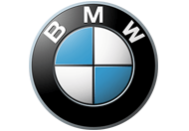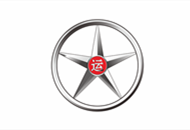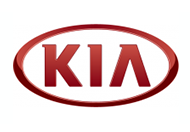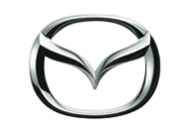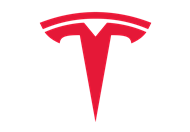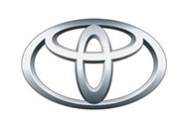BYD Fang Cheng Bao starts delivering its 1st model Bao 5
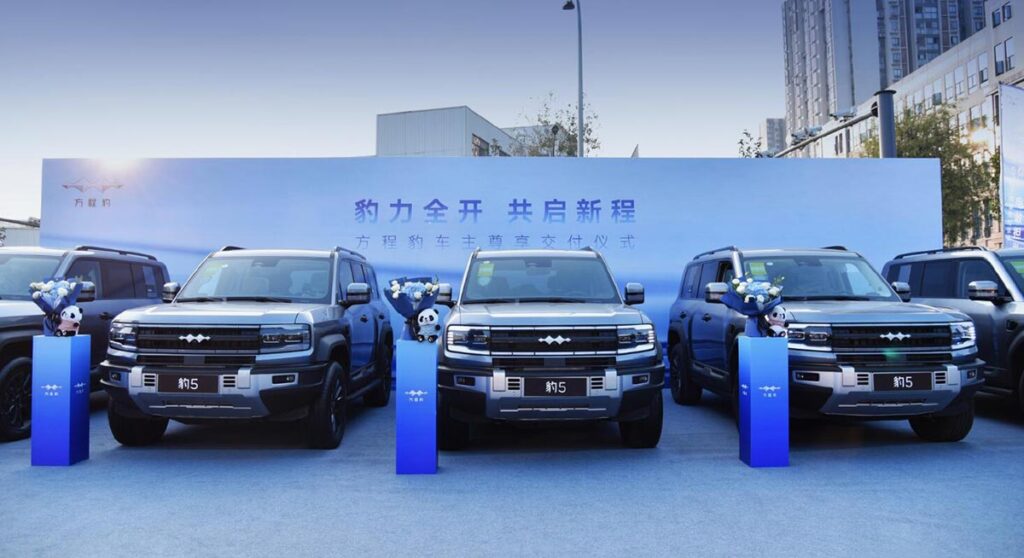
(Image credit: Fang Cheng Bao)
BYD‘s (OTCMKTS: BYDDY) personalized sub-brand, Fang Cheng Bao, began deliveries of its first model, the Bao 5, one day earlier than planned.
The first owners of the Bao 5 have already taken delivery, with BYD Group president Wang Chuanfu personally delivering the vehicle to some owners, Fang Cheng Bao announced today.
Deliveries of the model in more cities will begin gradually, Fang Cheng Bao said.
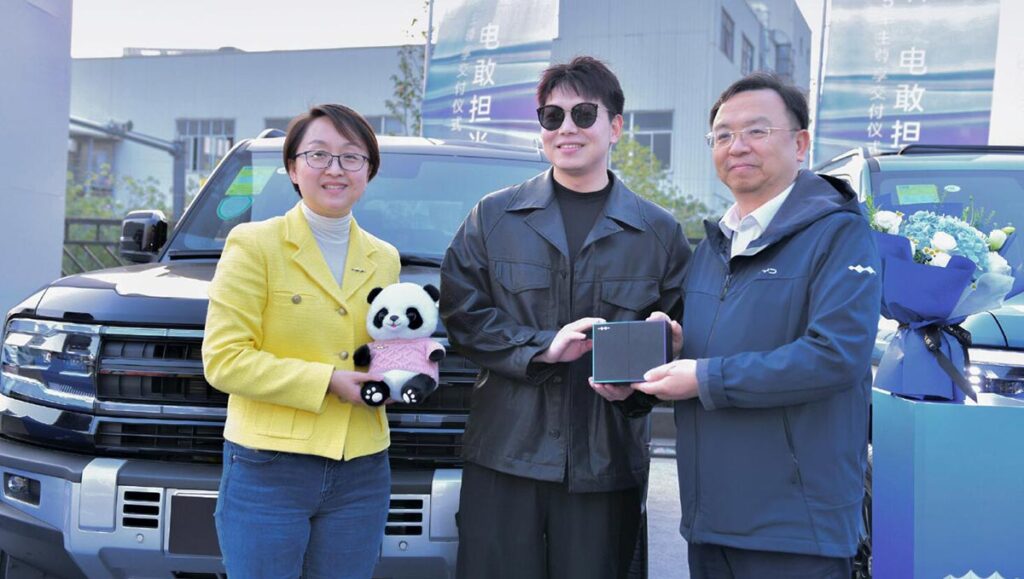
(BYD Group president Wang Chuanfu (right) and Fang Cheng Bao general manager Xiong Tianbo (left) deliver the Bao 5 to an owner.)
BYD officially unveiled the Fang Cheng Bao brand and a technology platform called DMO on August 16, giving the Bao 5 its official debut.
DMO is Fang Cheng Bao’s exclusive platform, where O stands for off-road and DM for dual mode.
The Bao 5 is an off-road SUV with a length, width and height of 4,890 mm, 1,970 mm and 1,920 mm respectively, and a wheelbase of 2,800 mm.
The hybrid car is powered by a battery pack with a capacity of 31.8 kWh and it has a CLTC battery range of 125 km. It has a combined range of 1,200 kilometers when fully fueled and charged.
At the August 16 launch event, BYD also debuted the Bao 3 at the time, as well as the Super 8, a Bao 8 concept.
Both the Bao 8 and Bao 3 will be launched in the second half of next year, Fang Cheng Bao general manager Xiong Tianbo said in an interview with local media on the sidelines of the Guangzhou auto show earlier this month.
Fang Cheng Bao officially launched the Bao 5 on November 9, offering three versions with starting prices of RMB 289,800 ($40,580), RMB 309,800, and RMB 352,800, respectively.
The first delivery of the Bao 5 would take place on November 24, Fang Cheng Bao said on November 20.
The latest development means that the model’s first delivery is one day earlier than originally planned.
This has been a common strategy used by BYD over the past few years to provide a better customer experience by acting beyond expectations.
The company has previously typically offered pre-sale prices when launching a new model, and announced slightly lower final prices when the model officially goes on sale.





